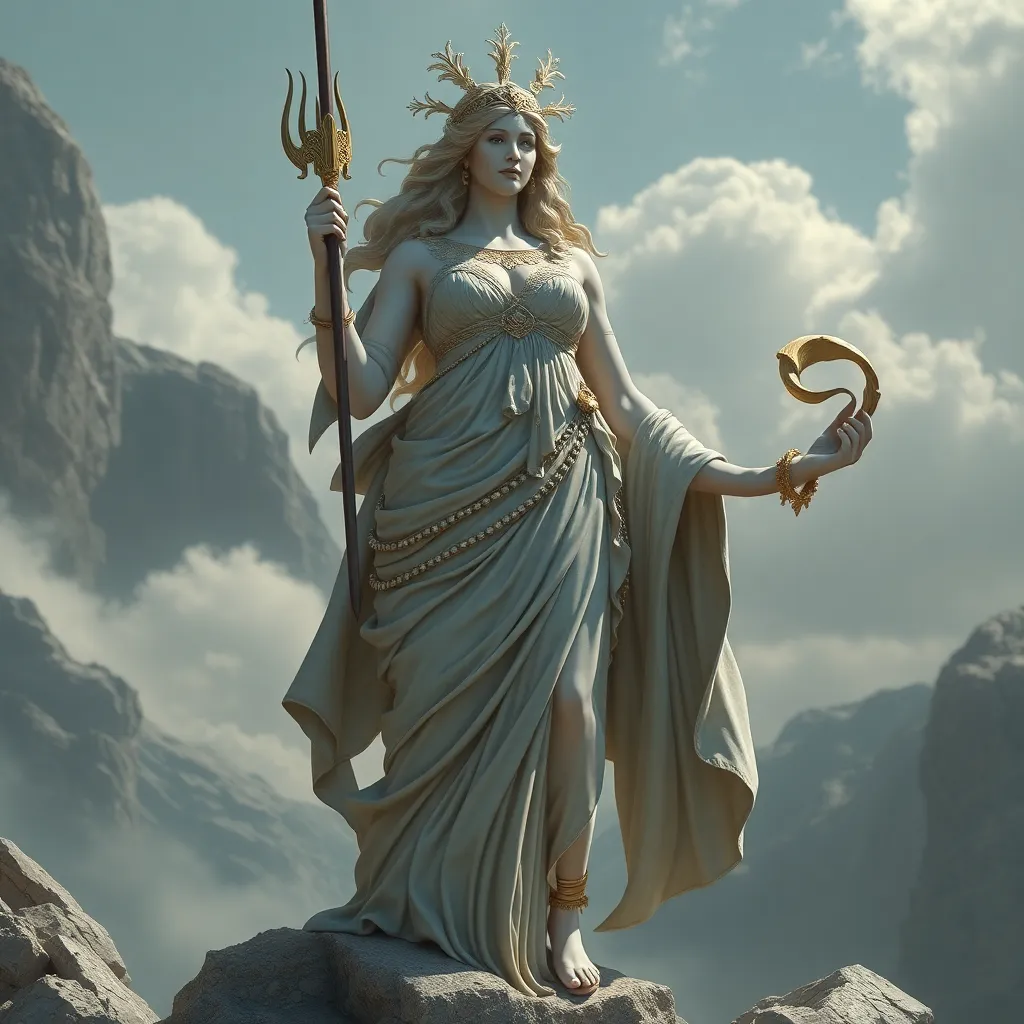The Titaness Leto: Mother of Apollo and Artemis
I. Introduction
Leto, a significant figure in Greek mythology, is best known as the mother of the twin deities Apollo and Artemis. Her story is woven into the intricate tapestry of myths that illuminate the nature of the gods, the challenges faced by mortals, and the virtues celebrated in ancient Greece.
As a Titaness, Leto occupies a unique position in the pantheon, embodying themes of motherhood, protection, and resilience. This article aims to explore Leto’s origins, her role as a mother, her representations in art and literature, her influence in cult and worship, and her legacy in modern culture.
II. Leto’s Origins and Background
Leto is one of the lesser-known Titans, the offspring of the primordial beings Coeus and Phoebe. This genealogy places her within the larger context of the Titan family, which includes notable figures such as Cronus and Rhea, as well as the Olympian gods who would later overthrow them.
Her lineage connects her to several other deities. Leto is often associated with her brother, the Titan Atlas, and her parents Coeus and Phoebe, who represent intellect and brightness, respectively. This connection to the Titan family is significant as it situates Leto within the cosmic order of Greek mythology.
In terms of attributes, Leto is often depicted as a graceful and nurturing figure. Symbolically, she represents motherhood, femininity, and the protective instincts that come with nurturing her children. Her name itself is believed to be derived from the Greek word for “hidden” or “concealed,” reflecting the challenges she faced during her life.
III. The Myth of Leto and the Birth of Apollo and Artemis
The myth of Leto is most famously tied to the birth of her children, Apollo and Artemis. Her pregnancy was fraught with peril, primarily due to the jealousy of Hera, the wife of Zeus. When Leto became pregnant by Zeus, Hera unleashed her wrath, forbidding Leto from giving birth on solid ground.
In her quest for refuge, Leto traveled far and wide, facing numerous challenges. She was turned away from many places, including the land of Lycia and the island of Crete, as Hera’s influence spread fear among the inhabitants. Ultimately, Leto found sanctuary on the floating island of Delos, where she gave birth to her twins.
The birth of Apollo and Artemis is a significant event in mythology, symbolizing the triumph of motherhood over adversity. The island of Delos became a sacred site, revered as the birthplace of these powerful deities.
IV. Leto’s Role as a Mother
Leto’s relationship with her children, Apollo and Artemis, is characterized by deep affection and protective instincts. As they grew, she imparted wisdom and values to them, guiding their development into powerful gods.
- Parenting Styles: Leto taught Apollo the arts of music and prophecy, while Artemis became the goddess of the hunt and wilderness. This nurturing allowed them to embody their distinct attributes.
- Protective Nature: Leto fiercely protected her children from harm, especially from Hera’s jealousy. She was known to intervene on their behalf, ensuring their safety and success.
Her role as a mother is often celebrated in myths, emphasizing the traditional values of family and protection within Greek culture.
V. Leto in Art and Literature
Leto’s image has been captured in various forms of ancient Greek art and literature. In sculpture, she is often depicted as a serene and maternal figure, sometimes accompanied by her children. Notable artworks include:
- Statues and reliefs found in temples dedicated to Apollo and Artemis.
- Pots and vases illustrating scenes from her mythology.
In classical literature, Leto appears in works by poets such as Homer and Hesiod, where her story is intertwined with the narratives of Apollo and Artemis. Over time, her portrayal has evolved, reflecting changes in cultural values and artistic styles.
VI. Leto’s Influence in Cult and Worship
Leto’s significance extended beyond mythology into the realms of cult and worship. Temples and sanctuaries were dedicated to her, often associated with the worship of her children. Some key points include:
- Temples: The most famous temple dedicated to Leto was located on the island of Delos, a site of pilgrimage for worshippers of Apollo and Artemis.
- Festivals: Various festivals were held in honor of Leto, often coinciding with celebrations for Apollo and Artemis, highlighting her integral role in their mythology.
Through these practices, Leto’s presence was felt in the everyday lives of the ancient Greeks, illustrating her importance in their religious landscape.
VII. Leto’s Legacy in Modern Culture
In contemporary culture, Leto’s legacy endures through various media and literature. She serves as a symbol of motherhood and the protective nature inherent in parenting. Her story continues to inspire:
- Literature: Modern novels and adaptations often reference Leto’s themes of sacrifice and strength.
- Media: Films and television shows draw upon her myth, framing her as a complex character in the rich tapestry of Greek mythology.
The ongoing impact of Leto’s myth reflects the timelessness of her story and its relevance to contemporary themes of family, resilience, and empowerment.
VIII. Conclusion
In conclusion, Leto’s significance in Greek mythology is profound, representing the essence of motherhood and the trials faced by women throughout history. Her story is one of resilience against adversity, illustrating the strength found in familial bonds.
Her enduring legacy, seen in both ancient practices and modern interpretations, underscores the importance of mythological figures like Leto, who continue to resonate with audiences today. Leto’s narrative enriches our understanding of the cultural values of the past, while also offering timeless lessons on love, protection, and the challenges of motherhood.




